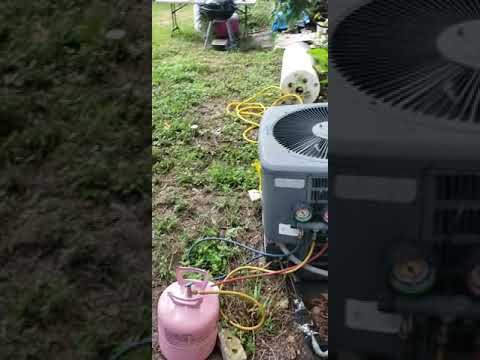No products in the cart.
Other Info
The R-410A Phase-Out
Basically this rule introduced dates of when HFC refrigerants would be phased out. The next year in 2016 an amendment to the Montreal Protocol was announced and signed. This amendment, known as the Kigali Amendment, scheduled the phase out of HFC refrigerants across the globe. Every time 404A was released, vented, or leaked into the atmosphere it would get trapped as a greenhouse gas and actively contribute to Global Warming.
Just as before, this change will affect everything from system design to maintenance over the coming years. Homeowners and HVAC professionals must both prepare for the switch to new refrigerants to ensure cooling systems run efficiently. The HVAC industry is getting ready for a major change at the end of this year.

As supply diminishes and demand remains steady, the cost of R-410A is likely to rise. Homeowners and businesses r410a refrigerant should consider the long-term costs of maintaining an R-410A system versus upgrading to a new one with a more sustainable refrigerant. Yes, R-410A offers better cooling efficiency and environmental benefits compared to R22.
In 2020, the Environmental Protection Agency (EPA) banned the production and import of R-22 refrigerant because it was damaging the ozone. That fire suppressant turned out to have a high level of Global Warming Potential (GWP). In an effort to protect the environment, the EPA is phasing down R-410A. As of January 1, 2025, production of HVAC systems using R-410A stopped. The refrigerant itself and the parts for these systems will still be made for a while, but production of them will slow year after year.
The main reason why non-certified people can’t purchase R-410A or use it to recharge their air conditioning system themselves is that refrigerants are dangerous substances. It actually requires training in handling and safety protocols to work with refrigerants without serious risk. Even accidentally letting your skin come into contact with R-410A can cause frostbite and other issues, not to mention the skill it requires to properly refill an air conditioning system. Most homeowners pay $300-$450 for an R-410A AC refill plus the cost of repairs needed before the unit will hold refrigerant. If your AC system is already aging, this is the perfect time to contemplate investing in a newer model that uses the new R-454B refrigerant.
Additionally, consumers should consider planning future HVAC investments with sustainability in mind. This may involve assessing the long-term costs and benefits of energy-efficient systems that utilize lower-GWP refrigerants. Several alternatives to R-410A are being developed and adopted as the HVAC industry seeks more environmentally friendly solutions.
Notable among these are R-32, R-454B, and R-513A, all of which have lower global warming potential compared to R-410A. R-32, in particular, is gaining popularity because it has a GWP of approximately one-third that of R-410A while still providing great cooling efficiency. As the R-410A refrigerant phaseout continues, choosing the right refrigerant and HVAC system is more important than ever. Upgrading to a system that uses R-454B or R-32 refrigerant can improve efficiency, reduce environmental impact, and provide peace of mind for years to come. If you have questions about the R-410A phaseout, contact Russett Southwest today. Our expert team can help you choose the best system for your home and ensure a smooth transition to eco-friendly cooling.
In addition, the AC&R Safety Coalition was created to help educate professionals about R-410A systems. Chemours has developed a new generation of low global warming potential (GWP), hydrofluoroolefin (HFO) based refrigerant replacements for Freon™ 22 in new and retrofitted equipment. It is more efficient and can cool or heat a space more effectively using less energy. It is also less flammable at ambient temperatures and less likely to contribute to ozone depletion. Additionally, R410a is a non-toxic refrigerant, so it is generally safe to use in homes and businesses. Designed for systems requiring high cooling capacity, R-410A provides reliable performance for commercial air conditioning applications, ensuring maximum comfort even in large spaces.
This resulted in a phasedown schedule that would significantly reduce the use of refrigerants with high GWP by 2036. A single compressor oil change to AB typically removes between 50% and 80% of the existing MO, which satisfies the recommendations and requirements of most compressor manufacturers. After the oil change, systems require between 10% and 25% less refrigerant. Consult your OEM for guidelines on retrofitting existing R-12 systems. As R410-a production gets gradually reduced and phased out, the refrigerant will likely become harder to find and get more expensive. Therefore, if you are installing a new AC or HVAC unit, or replacing your old system, we recommend future-proofing your investment by purchasing one that uses the newer A2L refrigerants.


